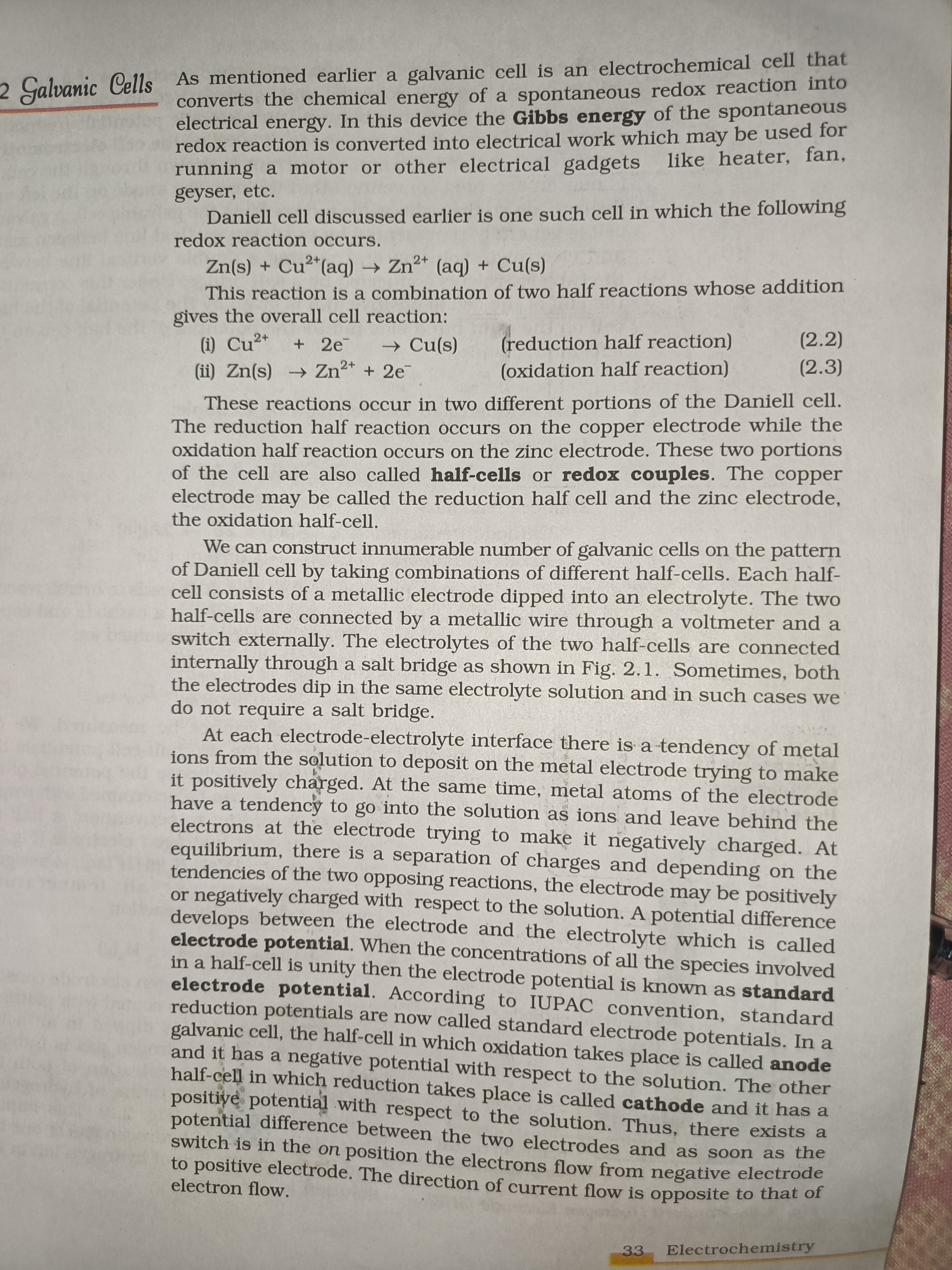What are the key components and reactions involved in a Daniell cell, and how does electrode potential work?

Understand the Problem
The text discusses the concept of galvanic cells, specifically focusing on the Daniell cell and the reactions that occur within it. It outlines the reduction and oxidation half-reactions, points out the roles of various components such as half-cells and electrodes, and explains the concept of electrode potential.
Answer
The key components of a Daniell cell are zinc and copper electrodes in their respective sulfate solutions. The key reactions are Zn → Zn²⁺ + 2e⁻ (oxidation) and Cu²⁺ + 2e⁻ → Cu (reduction). Electrode potential is the voltage due to these reactions.
The Daniell cell involves a zinc electrode in a zinc sulfate solution and a copper electrode in a copper sulfate solution. The reactions are Cu²⁺ + 2e⁻ → Cu (reduction) and Zn → Zn²⁺ + 2e⁻ (oxidation). Electrode potential is the voltage generated due to these reactions.
Answer for screen readers
The Daniell cell involves a zinc electrode in a zinc sulfate solution and a copper electrode in a copper sulfate solution. The reactions are Cu²⁺ + 2e⁻ → Cu (reduction) and Zn → Zn²⁺ + 2e⁻ (oxidation). Electrode potential is the voltage generated due to these reactions.
More Information
The Daniell cell converts chemical energy from redox reactions into electrical energy. This was historically significant in the development of batteries.
Tips
Common mistakes include confusing the direction of electron flow (which is from zinc to copper) and not properly balancing the redox reactions.
Sources
- Daniell Cell: Definition, Chemical Reaction, Construction ... - Toppr - toppr.com
- Daniell Cell - an overview | ScienceDirect Topics - sciencedirect.com
- Electrochemical Cells: The Daniell Cell - Dummies.com - dummies.com
AI-generated content may contain errors. Please verify critical information